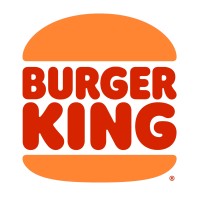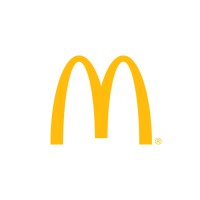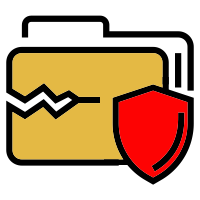
Burger King Company Cyber Security Posture
bk.comThe year is 1954. Dave and Jim*, two budding entrepreneurs, are on a mission to re-design the perfect broiler, one that will infuse flame-grilled goodness into every burger. And that's how our brand was born. Today the Burger King Corporation, its affiliates and its franchisees collectively operate more than 17,000 restaurants in more than 100 countries and U.S. territories, serving over 11 million guests per day and they’re still coming back for that flame-grilled flavor. The Burger King® brand is owned by Restaurant Brands International Inc. (“RBI”), which owns three of the world’s iconic quick service restaurant brands – Burger King®, Tim Hortons®, and Popeyes Louisiana Kitchen®. But we still have room to grow – and that’s where you come in. We need strong operations, bold marketing, and the best people around to make these brands great. And if we like what we see, there’s no limit to how far you could go here. For more information and exciting career opportunities, please RBI’s website at www.rbicareers.com. For more information about Burger King Corporation, please visit the company’s website at www.bk.com or follow us on Facebook and Twitter. Burger King is a registered trademark of Burger King Corporation. All rights reserved. Please visit www.bk.com for more information on Burger King Corporation trademarks. * Dave Egerton and Jim McLamore, original founders of the Burger King® brand.
Burger King Company Details
burger-king
106858 employees
634358.0
722
Restaurants
bk.com
Scan still pending
BUR_1233888
In-progress
Between 900 and 1000
This score is AI-generated and less favored by cyber insurers, who prefer the TPRM score.
 Burger King Global Score
Burger King Global Score.png)

Burger King Company Scoring based on AI Models
| Model Name | Date | Description | Current Score Difference | Score |
|---|---|---|---|---|
| AVERAGE-Industry | 03-12-2025 | This score represents the average cybersecurity rating of companies already scanned within the same industry. It provides a benchmark to compare an individual company's security posture against its industry peers. | N/A | Between 900 and 1000 |
Burger King Company Cyber Security News & History
| Entity | Type | Severity | Impact | Seen | Url ID | Details | View |
|---|---|---|---|---|---|---|---|
| Burger King | Data Leak | 85 | 4 | 05/2019 | BUR22620323 | Link | |
Rankiteo Explanation : Attack with significant impact with customers data leaksDescription: A French online shop Kool King specifically tailored to be used by kids who bought Burger King menus exposed nearly 37,900 records after a cyber attack. The data was leaked because the database storing it was misconfigured, allowing anyone with an Internet connection and the knowledge to find it to get to the records stored within. Since the database was not secured in any way and publicly accessible, anyone who reached it could then edit, download, or even destroy the data without needing admin credentials. The information compromised contained personally identifiable information (PII) such as emails, passwords, names, phones, DOB, voucher codes, links to the externally stored certificates, etc.100 | |||||||
| Burger King | Data Leak | 60 | 3 | 08/2023 | BUR22818923 | Link | |
Rankiteo Explanation : Attack with significant impact with internal employee data leaksDescription: Burger King, the world's largest fast food chain, exposed sensitive credentials to the public twice, endangering their systems and data. Burger King in France exposed private information to the public as a result of a website configuration error, the Cybernews investigation team found. People who applied for jobs at Burger King in France may have been impacted because the impacted website processed job applications. It's not the first time Burger King has exposed sensitive information; supposedly, the France branch exposed personally identifying information (PII) of children who purchased Burger King menus due to a similar misconfiguration. | |||||||
Burger King Company Subsidiaries

The year is 1954. Dave and Jim*, two budding entrepreneurs, are on a mission to re-design the perfect broiler, one that will infuse flame-grilled goodness into every burger. And that's how our brand was born. Today the Burger King Corporation, its affiliates and its franchisees collectively operate more than 17,000 restaurants in more than 100 countries and U.S. territories, serving over 11 million guests per day and they’re still coming back for that flame-grilled flavor. The Burger King® brand is owned by Restaurant Brands International Inc. (“RBI”), which owns three of the world’s iconic quick service restaurant brands – Burger King®, Tim Hortons®, and Popeyes Louisiana Kitchen®. But we still have room to grow – and that’s where you come in. We need strong operations, bold marketing, and the best people around to make these brands great. And if we like what we see, there’s no limit to how far you could go here. For more information and exciting career opportunities, please RBI’s website at www.rbicareers.com. For more information about Burger King Corporation, please visit the company’s website at www.bk.com or follow us on Facebook and Twitter. Burger King is a registered trademark of Burger King Corporation. All rights reserved. Please visit www.bk.com for more information on Burger King Corporation trademarks. * Dave Egerton and Jim McLamore, original founders of the Burger King® brand.
Access Data Using Our API

Get company history
.png)
Burger King Cyber Security News
Threat Actor Offers Burger King Backup System RCE Exploit for $4,000
A notorious threat actor operating under the alias #LongNight has been observed marketing remote code execution (RCE) access to Burger King ...
Threat Actor Allegedly Selling Burger King Backup System RCE Vulnerability for $4,000
A cybersecurity threat has emerged targeting one of the world's largest fast-food chains, as a threat actor known as #LongNight has put up ...
Bloomin’ Brands adds seasoned tech exec to leadership team as CIO
Bloomin' Brands Inc. has appointed Rafael Sanchez as chief information officer and senior vice president, effective June 30.
Threat Actor Sells Burger King Backup System RCE Vulnerability for $4,000
Cybercriminal 'LongNight' Targets Burger King. The exploit, as described by the threat actor, allegedly allows attackers to execute arbitrary ...
Burger King Can't Chop Claims It Cooked Up Misleading Ads
Burger King can't toss a proposed class action alleging its advertisements misrepresent the size and amount of toppings in its iconic ...
Krispy Kreme hit by cyberattack, disrupting delivery of online doughnut orders
In the report, Krispy Kreme said it learned about "unauthorized activity on a portion of its information technology systems" on Nov. 29. The ...
Thursday's Afternoon Update
International Workplace Group (IWG) will open 33 new coworking locations throughout Florida. Ranging in size between 6,000 and 155,000 square ...
New Wendy’s set to open at former Burger King location near MSU campus
New Wendy's set to open at former Burger King location near MSU campus · Facebook · Twitter · WhatsApp · SMS · Email · Print · Copy article link
Here’s what corporate boards are asking Kevin Mandia about
Here's what corporate boards are asking Kevin Mandia about. The Mandiant founder and Google Cloud adviser says boards are paying more attention ...

Burger King Similar Companies

Papa Johns
Papa Johns seeks people who have an entrepreneurial spirit and share our philosophy for success. Hands-on training, a clean and safe work environment, quality business practices, advancement opportunities and meaningful work combine to produce not only the best pizza, but also the best team members!

Jack in the Box
Jack in the Box has always been the place for those who live outside the box. Where you can try new things and order what you want when you want it. Now, let’s get to the facts! Did you know Jack in the Box was founded on February 21, 1951, by a businessman named Robert O. Peterson in San Diego, Cal

McDonald's
McDonald’s is the world’s leading global foodservice retailer with over 37,000 locations in over 100 countries. More than 90% of McDonald’s restaurants worldwide are owned and operated by independent local business men and women. McDonald's & our franchisees employ 1.9 million people worldwide.

Darden
Darden is a restaurant company featuring a portfolio of differentiated brands that include Olive Garden, LongHorn Steakhouse, Yard House, Ruth's Chris Steak House, Cheddar's Scratch Kitchen, The Capital Grille, Seasons 52, Eddie V's, and Bahama Breeze. Our people equal our success, and we are proud

The Pizza Company
In early 2001, The Pizza Company made its debut in Thailand. The brand differentiated itself by offering consumers a fresh and innovative pizza approach based on richer and heavier toppings and greater varieties to enhance the dining experience. Since the first day of launch, The Pizza Company so

Chipotle Mexican Grill
Chipotle Mexican Grill, Inc. (NYSE: CMG) is cultivating a better world by serving responsibly sourced, classically-cooked, real food with wholesome ingredients without artificial colors, flavors or preservatives. Chipotle has over 3,250 restaurants in the United States, Canada, the United Kingdom, F

Frequently Asked Questions
Explore insights on cybersecurity incidents, risk posture, and Rankiteo's assessments.
Burger King CyberSecurity History Information
How many cyber incidents has Burger King faced?
Total Incidents: According to Rankiteo, Burger King has faced 2 incidents in the past.
What types of cybersecurity incidents have occurred at Burger King?
Incident Types: The types of cybersecurity incidents that have occurred incidents Data Leak.
Incident Details
Can you provide details on each incident?

Incident : Data Exposure
Title: Burger King Data Exposure Incidents
Description: Burger King, the world's largest fast food chain, exposed sensitive credentials to the public twice, endangering their systems and data.
Type: Data Exposure
Attack Vector: Website Configuration Error
Vulnerability Exploited: Website Misconfiguration

Incident : Data Breach
Title: Kool King Data Breach
Description: A French online shop Kool King specifically tailored to be used by kids who bought Burger King menus exposed nearly 37,900 records after a cyber attack. The data was leaked because the database storing it was misconfigured, allowing anyone with an Internet connection and the knowledge to find it to get to the records stored within. Since the database was not secured in any way and publicly accessible, anyone who reached it could then edit, download, or even destroy the data without needing admin credentials. The information compromised contained personally identifiable information (PII) such as emails, passwords, names, phones, DOB, voucher codes, links to the externally stored certificates, etc.
Type: Data Breach
Attack Vector: Misconfigured Database
Vulnerability Exploited: Publicly Accessible Database
What are the most common types of attacks the company has faced?
Common Attack Types: The most common types of attacks the company has faced is Data Leak.
Impact of the Incidents
What was the impact of each incident?

Incident : Data Exposure BUR22818923
Data Compromised: Personally Identifiable Information (PII), Children's PII
Systems Affected: Job Application Website, Online Ordering System

Incident : Data Breach BUR22620323
Data Compromised: emails, passwords, names, phones, DOB, voucher codes, links to the externally stored certificates
Systems Affected: Database
What types of data are most commonly compromised in incidents?
Commonly Compromised Data Types: The types of data most commonly compromised in incidents are PII, Children's PII, emails, passwords, names, phones, DOB, voucher codes and links to the externally stored certificates.
Which entities were affected by each incident?

Incident : Data Breach BUR22620323
Entity Type: Online Shop
Industry: Retail
Location: France
Customers Affected: 37900
Data Breach Information
What type of data was compromised in each breach?

Incident : Data Exposure BUR22818923
Type of Data Compromised: PII, Children's PII
Personally Identifiable Information: Job Applicants, Children's PII

Incident : Data Breach BUR22620323
Type of Data Compromised: emails, passwords, names, phones, DOB, voucher codes, links to the externally stored certificates
Number of Records Exposed: 37900
Sensitivity of Data: High
Personally Identifiable Information: emails, passwords, names, phones, DOB
References
Where can I find more information about each incident?

Incident : Data Exposure BUR22818923
Source: Cybernews Investigation Team
Where can stakeholders find additional resources on cybersecurity best practices?
Additional Resources: Stakeholders can find additional resources on cybersecurity best practices at and Source: Cybernews Investigation Team.
Post-Incident Analysis
What were the root causes and corrective actions taken for each incident?

Incident : Data Breach BUR22620323
Root Causes: Misconfigured Database
Additional Questions
Impact of the Incidents
What was the most significant data compromised in an incident?
Most Significant Data Compromised: The most significant data compromised in an incident were Personally Identifiable Information (PII), Children's PII, emails, passwords, names, phones, DOB, voucher codes and links to the externally stored certificates.
What was the most significant system affected in an incident?
Most Significant System Affected: The most significant system affected in an incident were Job Application Website, Online Ordering System and Database.
Data Breach Information
What was the most sensitive data compromised in a breach?
Most Sensitive Data Compromised: The most sensitive data compromised in a breach were Personally Identifiable Information (PII), Children's PII, emails, passwords, names, phones, DOB, voucher codes and links to the externally stored certificates.
What was the number of records exposed in the most significant breach?
Number of Records Exposed in Most Significant Breach: The number of records exposed in the most significant breach was 379.0.
References
What is the most recent source of information about an incident?
Most Recent Source: The most recent source of information about an incident is Cybernews Investigation Team.
What Do We Measure?
















Every week, Rankiteo analyzes billions of signals to give organizations a sharper, faster view of emerging risks. With deeper, more actionable intelligence at their fingertips, security teams can outpace threat actors, respond instantly to Zero-Day attacks, and dramatically shrink their risk exposure window.
These are some of the factors we use to calculate the overall score:
Identify exposed access points, detect misconfigured SSL certificates, and uncover vulnerabilities across the network infrastructure.
Gain visibility into the software components used within an organization to detect vulnerabilities, manage risk, and ensure supply chain security.
Monitor and manage all IT assets and their configurations to ensure accurate, real-time visibility across the company's technology environment.
Leverage real-time insights on active threats, malware campaigns, and emerging vulnerabilities to proactively defend against evolving cyberattacks.




